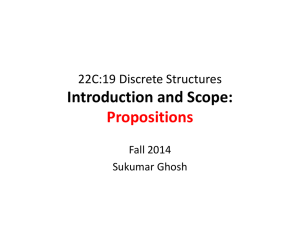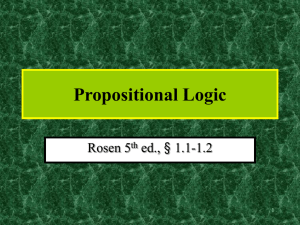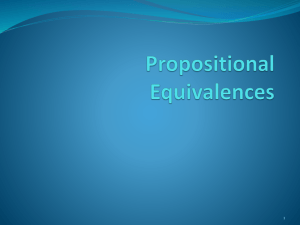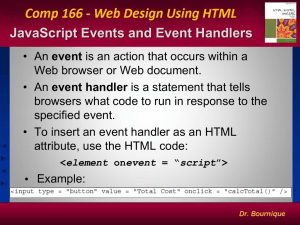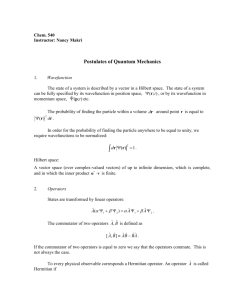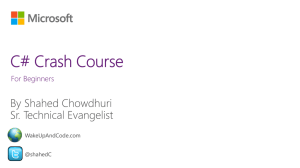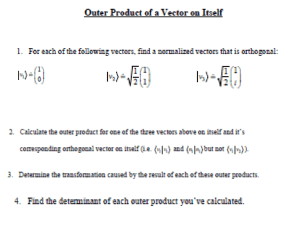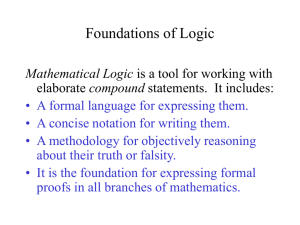Introduction and Scope
advertisement
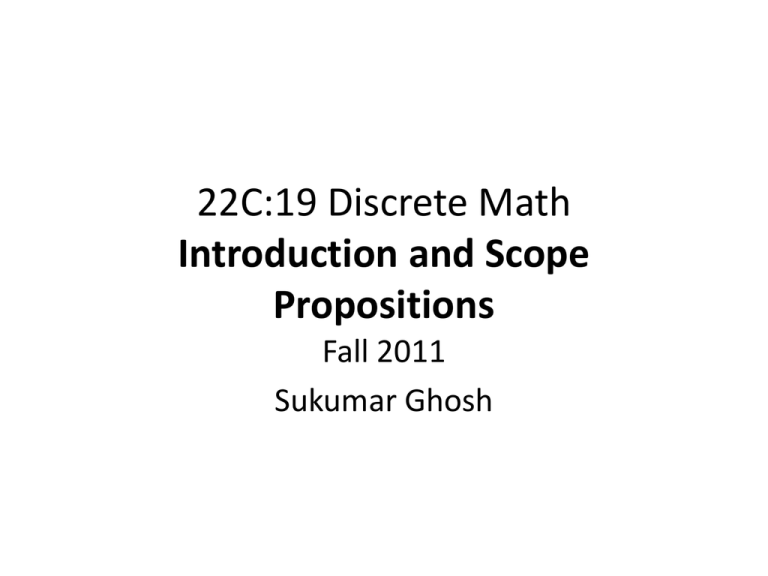
22C:19 Discrete Math Introduction and Scope Propositions Fall 2011 Sukumar Ghosh The Scope Discrete mathematics studies mathematical structures that are fundamentally discrete, not supporting or requiring the notion of continuity (Wikipedia). Deals with countable things. Why Discrete Math? Discrete math forms the basis for computer science: • Sequences • • • • Digital logic (how computers compute) Algorithms Program correctness Probability and gambling (or taking risks) “Continuous” math forms the basis for most physical and biological sciences Propositions A proposition is a statement that is either true or false “The sky is blue” “Today the temperature is below freezing” “9 + 3 = 12” Not propositions: “Who is Bob?” “How many persons are there in this group?” “X + 1 = 7.” Propositional (or Boolean) variables These are variables that refer to propositions. • Usually denoted by lower case letters p, q, r, s, etc. • Each can have one of two values true (T) or false (F) A proposition can be: • A single variable p • A formula of multiple variables like p ∧ q, s ∨¬r) Propositional (or Boolean) operators Logical operator: NOT Logical operator: AND Logical operator: OR Logical operator: EXCLUSIVE OR Note. p ⊕ q is false if both p, q are true or both are false (Inclusive) OR or EXCLUSIVE OR? Logical Operator NAND and NOR Conditional Operator Conditional operators Conditional operators Set representations A proposition p can also be represented by a set (a collection of elements) for which the proposition is true. Universe p p pp p∧q q ¬p Venn diagram q p∨q Bi-conditional Statements Translating into English Translating into English Great for developing intuition about propositional operators. You can access the Internet from campus (p) only if you are a CS major (cs), or you are not a freshman (f) p ⟶ (cs ∨¬ f) Precedence of Operators Boolean operators in search Tautology and Contradiction Equivalence Examples of Equivalence Examples of Equivalence More Equivalences Associative Laws Distributive Law Law of absorption De Morgan’s Law You can take 22C:21 if you take 22C:16 and 22M:26 You cannot take 22C:21 if you have not taken 22C:16 or 22M:26 How to prove Equivalences Examples? Follow class lectures. Muddy Children Puzzle A father tells his two children, a boy and a girl, to play in the backyard without getting dirty. While playing, both children get mud on their foreheads. After they returned home, the father said: “at least one of you has a muddy forehead,” and then asked the children to answer YES or NO to the question: “Do you know if you have a muddy forehead?” the father asked the question twice. How will the children answer each time? Wrap up Understand propositions, logical operators and their usage. Understand equivalence, tautology, and contradictions. Practice proving equivalences, tautology, and contradictions. Study the Muddy Children Puzzle from the book.
